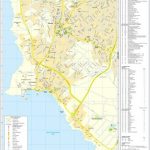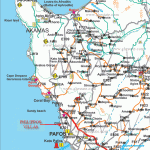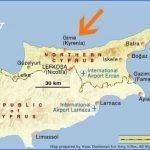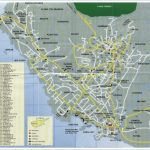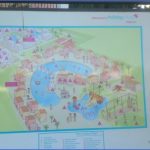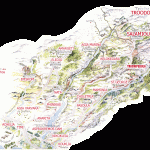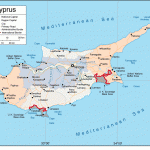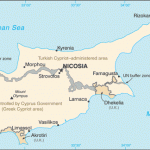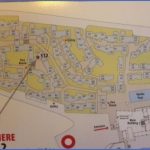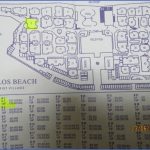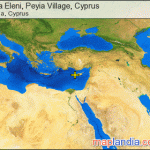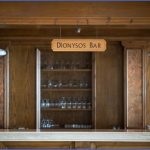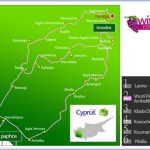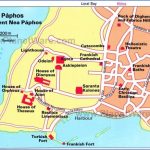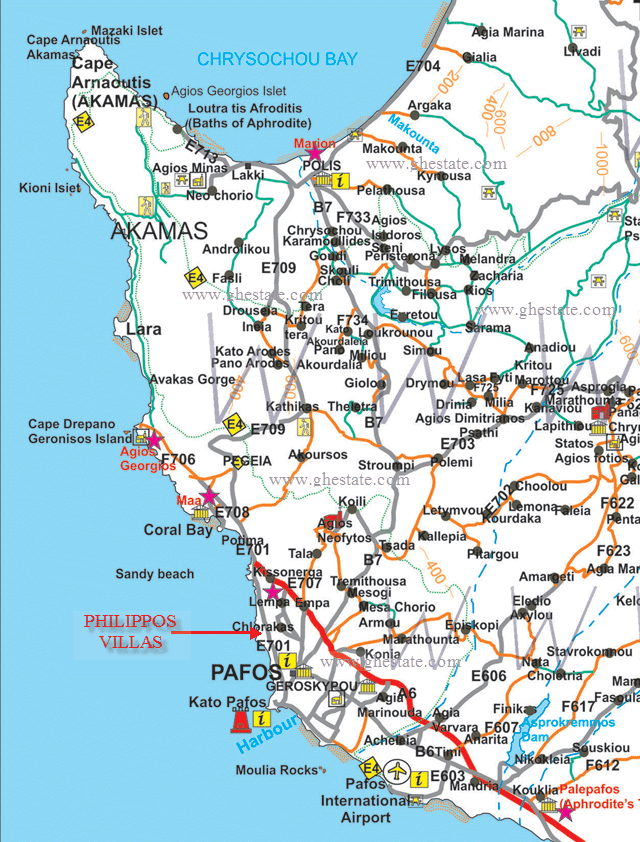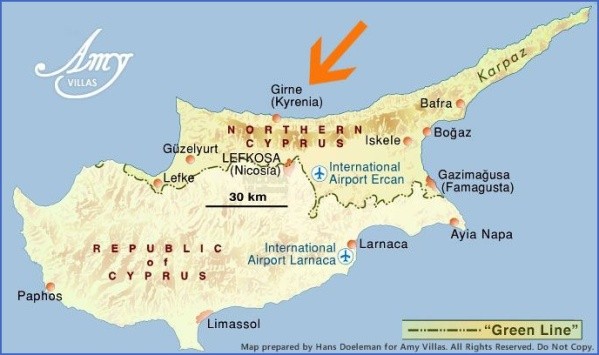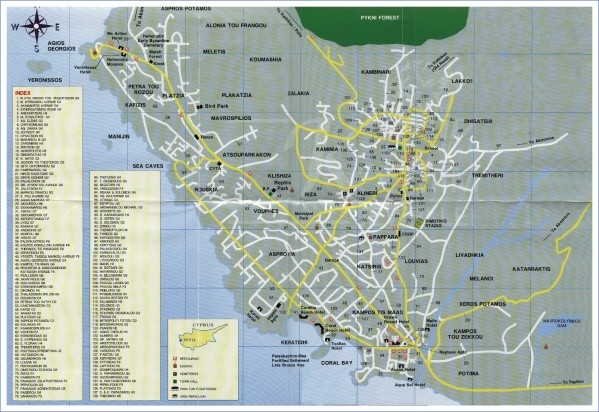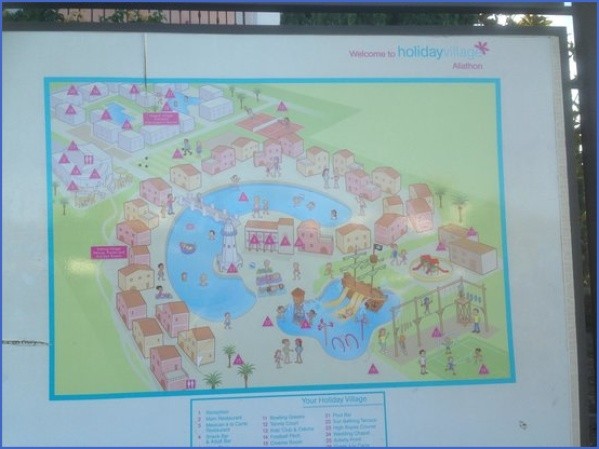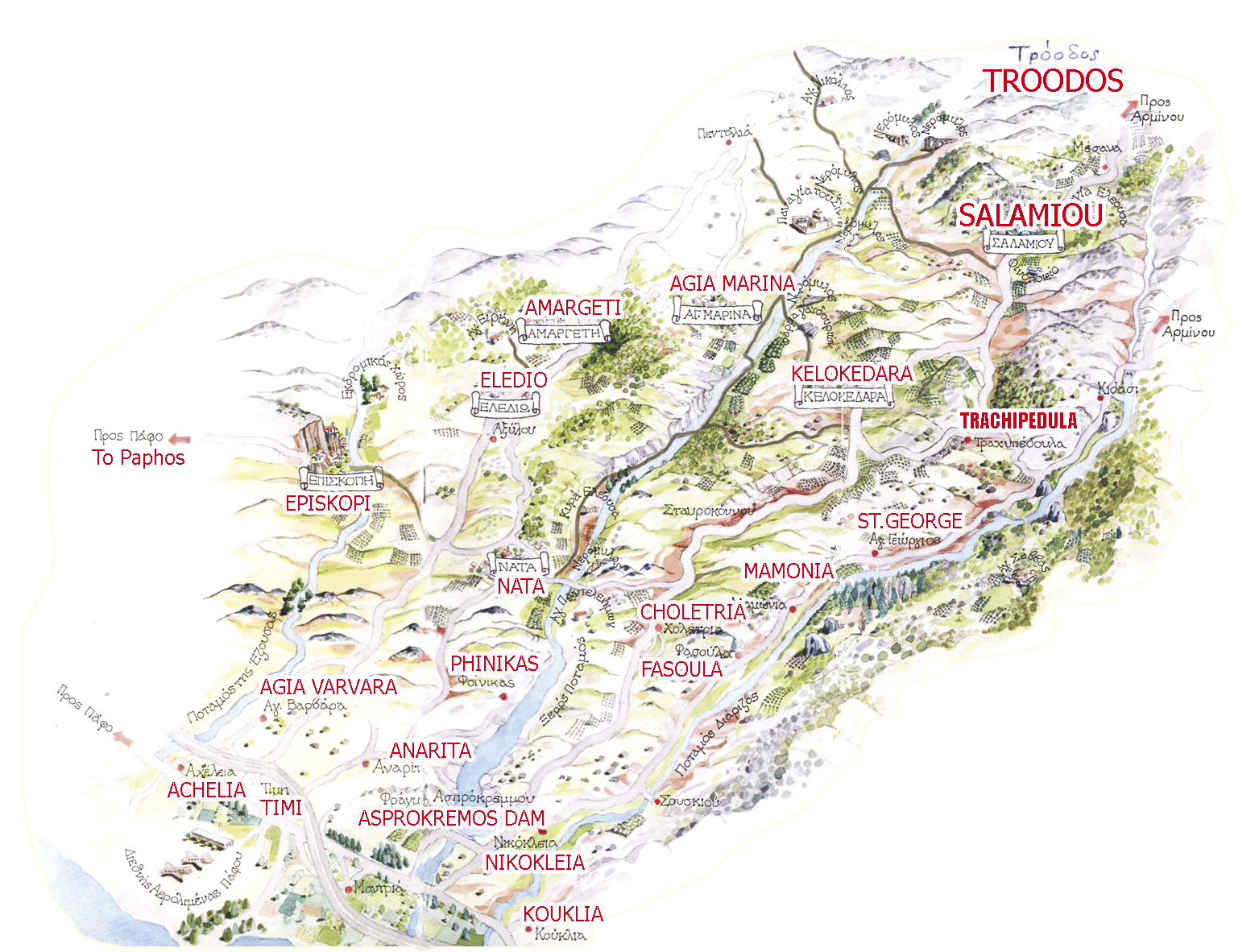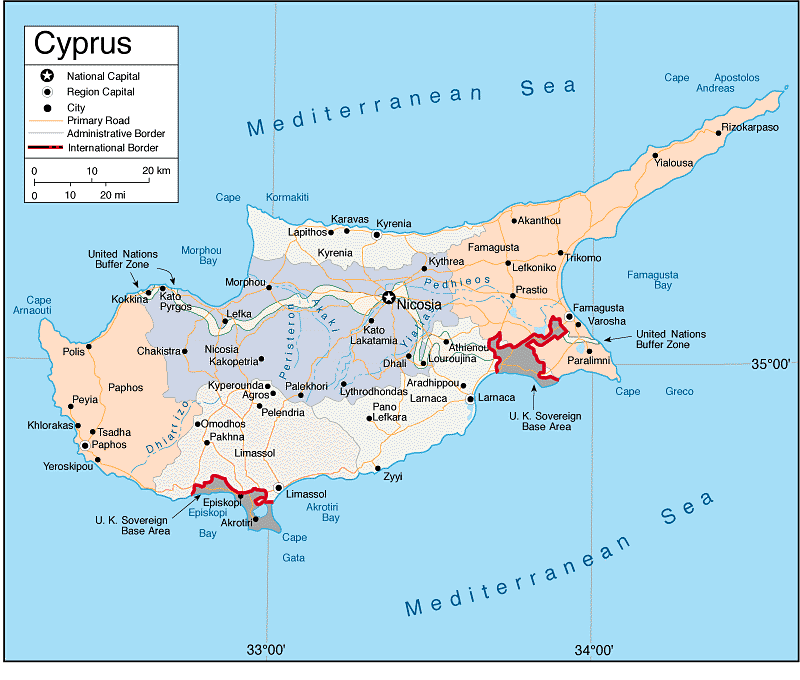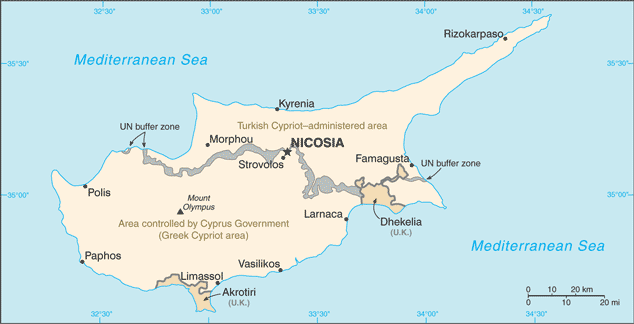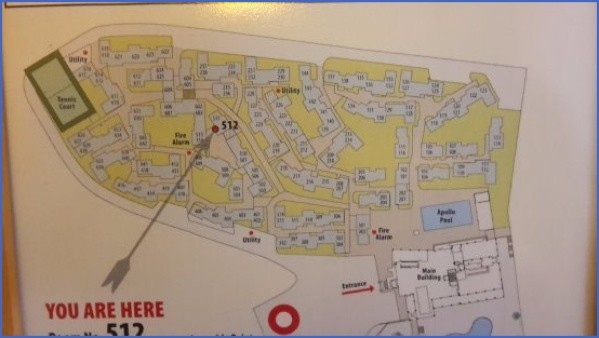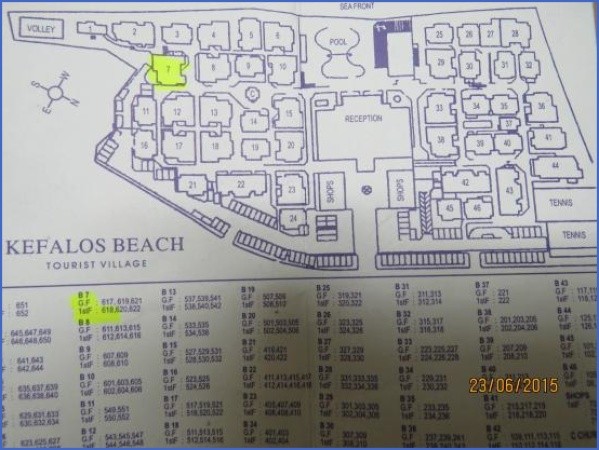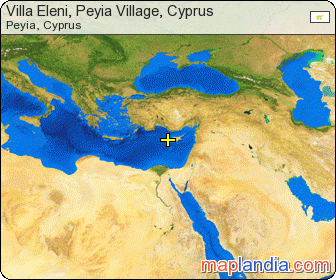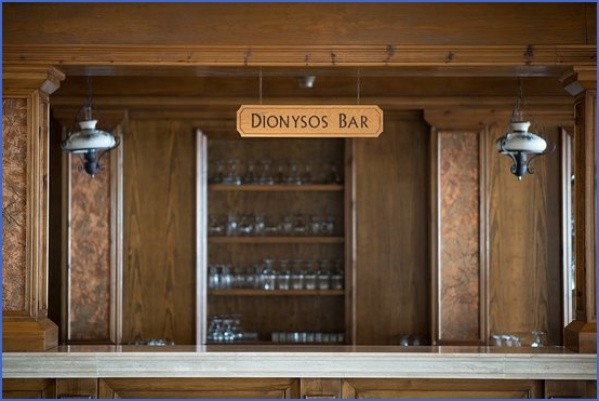EXPLORING THE SEMI-MOUNTAINOUS AND MOUNTAINOUS VILLAGES OF PAFOS DISTRICT
a) Semi-mountainous villages
Route: Asprogia, Mamountali, Panagia, Chrysorrogiatissa Monastery, Agia Moni Monastery, Statos-Agios Fotios (Ampelitis), Statos, Agios Fotios
Very few villagers still wear traditional breeches
Asprogia, west of Panagia, is probably a very old settlement, since, as Hill cites, here iron pyrites was extracted in antiquity. The presence of a mosque with a small minaret testifies the presence of a few Turkish Cypriots who have recently abandoned the settlement. The steep-pitched church of Agios Epifanios dates back to 1723. Mamountali, south of Asprogia, is an abandoned settlement. Panagia, can be approached either from Pafos or through the mountains of Troodos, via the Cedar Valley or Agios Georgios Emnon. The village has a number of sites worth visiting such as the Historic Cultural Center of Makarios III where in it are displayed personal belongings of Makarios, particularly photographs concerning his manifold activities. As it is well known, Panagia is the birthplace of Makarios, late Archbishop and president of Cyprus. Not far away from the Cultural Center stands the family house of Makarios in which he was born and bred before leaving for Kykko monastery. It is a very simple traditional mountainous house. The whole village of Panagia impresses with its traditional architecture, the climbing vines in front of the entrance doors, the large red wine jars currently decorating courtyards and the centuries-old oak-trees. The busts of Mouskos and Sofocleous, at the entrance to the Gymnasium, point out the sacrifice of another two youths in the Cypriot struggle for Liberation. Close to the Gymnasium stands the large church of Agios Georgios, three-aisled, in which are preserved some very old portable icons. The restored church dates back to the 17th century. Worth visiting is the steep-pitched medieval church of B.V.M. Eleousa, at the periphery of the settlement with beams inside and flat tiles on the roof. Chrysorrogiatissa Monastery, about 800 metres a.s.l., is situated on a slope of mount Rogia, west of Pafos forest. In front of the main entrance to the monastery there is a cafe/restaurant from where the view is extensive and majestic. The monastery was founded in 1152 A.D. by monk Ignatios who found at Moulia (Pafos) the miraculous icon of Panagia, believed to have been painted by St Luke the Evangelist. Ignatios took the icon to the mountain where the monastery is now. Very little is known of Chrysorrogiatissa between the 12th century and the date Cyprus was conquered by the Turks (1571). At some time, administratively, it belonged to Kykko monastery. Barsky, the Russian monk, who visited the monastery in the 18th century, describes it as “poor, administered by Kykko, but located on a picturesque site, cool in summer with healthy water”. At the end of the 18th century the monastery was restored, with the single-aisled church being built on the foundations of the older one. A school, functioning for the children of the neighbouring villages since the middle of the 18th century, was dissolved at the end of the 19th century. The church in the middle of the monasterial complex, impresses with the frescoes above the three entrances. In the vaulted church there are no frescoes except one in the sanctum depicting the Sacrifice of Abraham. The icon of Panagia Chrysorrogiatissa, with the exception of the face of Virgin Mary, is silver and gold- covered since the 18th century. Even the fire of 1967 did not destroy the gilted iconostasis as well as some other valuable treasures of the monastery (holy gospels, manuscripts, crosses, silver reliquaries, etc) kept for centuries. A Byzantine Hagiographic Center is responsible for the protection of Byzantine and post-Byzantine icons as well as other treasures. A winery has also been established, producing good quality wines from the vineyards of the monastery. The fermentation is done under natural conditions, without the intervention of modern technology. It is worth buying a bottle of wine from the monastery.
Villages Map: Explore Paphos Photo Gallery
Agia Moni Monastery
Agia Moni. Between Chrysorrogiatissa monastery and the new, planned settlement of Statos-Agios Fotios, stands the historic monastery of Agia Moni or Monastery of Agios Nikolaos or the Monastery of Priests, because of the large number of priests/monks it hosted in the past. According to tradition, the monastery was built by St Eftychios and St Nikolaos, in the 4th century A.D., on the ruins of the temple of Hera. In the 12th century the monastery possessed a workshop of manuscript-copying, while during the Frankish period it possessed three annexes. It was during the Turkish occupation of Cyprus that it declined and became an annex of Kykko monastery. In 1752, when Kykko monastery was destroyed by fire, the holy icon of the Madonna of Kykko was transferred, for safety reasons, here. In 1820, the monastery was, however, abandoned. The entrance to the restored monastery is through an arched door with an inscription on the left side pointing out that the monastery was restored in 1696. The shape of the monastery is the normal foursided structure with the church on the fourth side. The present church is two-aisled with the northern aisle supported by arches. From the description of the Russian monk, Barsky, it might have been three-aisled, domed, built on the ruins of an older Byzantine church. Even the Byzantine church was built on the ruins of an older-Byzantine church. Currently, it is built with hewn limestone blocks, while its icons are modern. A few metres north of the main church is a cruciform chapel, probably originally Latin, which is oriented north and south. Currently Agia Moni hosts Romanian monks. Statos-Agios Fotios, a planned settlement of 1974, is also known as Ampelitis. The earthquakes of 1953 and particularly the landslides of 1961, 1962, 1966, 1967, 1968 and 1969 were the main factors which compelled the Government to transfer the settlements of Statos and Agios Fotios to the new site which is called Statos-Agios Fotios after the names of both villages. However, the villagers continue to visit their scattered properties in the original villages. Trees, particularly walnut-trees, have been planted along both sides of the new wide roads. The church of Our Saviour, in the center of the settlement, dominates the landscape. Currently, a winery operates in the village. The private family house of Archbishop Chrysostomos lies on a conspicuous rise. Statos is currently an abandoned settlement lying north-west of present-day Statos-Agios Fotios. A few years ago there were many stills in the village for the production of zivania. According to N. Klerides, in antiquity there was a military station at the village called Statos. Most probably this dates back to the Roman times. Agios Fotios, lying south-west of present-day Statos-Agios Fotios, is currently abandoned. The traditional architecture of the deserted village is, however, still impressive. Hogarth mentions the pierced stones of Agios Fotios which are among the earliest discovered in Cyprus.
Cyprus Villages | Paphos | Limassol | Larnaca | Nicosia – Cyprus Island
Chrysorrogiatissa monastery
b) Mountainous villages
Destination: Stavros tis Psokas
The visitor can approach Stavros tis Psokas either through Lysos or through Agyia. The route via Panagia is rather long to be recommended. Though the distances on the map appear to be short, nevertheless, the time required is rather long, since the traveller has to follow earthen, meandering, often narrow roads. Stavros tis Psokas is a forest settlement, with tiled, steep pitched houses made of wood, including guest houses for those who would like to spend a few nights. In such case one should contact, by phone, the Divisional Forest Officer of Stavros beforehand. At Stavros there are all facilities for a picnic including equipment for barbecue, while a restaurant caters for those who might like to stay overnight or those who have no time to enjoy the picnic site. The environment at Stavros is very pleasant and cool, particularly in the warm summer days. In an enclosure the visitor can see the moufflon, the national animal of Cyprus. A few deer, kept for acclimatization in enclosures at Stavros, can also be seen. They are beautiful, fast-running animals with the males having deciduous branching antlers. The deer, as historically known, used to live in Cyprus up to the Middle Ages. They were abundant in almost all the forests of Cyprus.
Maybe You Like Them Too
- Top 10 Islands You Can Buy
- Top 10 Underrated Asian Cities 2023
- Top 10 Reasons Upsizing Will Be a Huge Travel Trend
- Top 10 Scuba Diving Destinations
- World’s 10 Best Places To Visit

